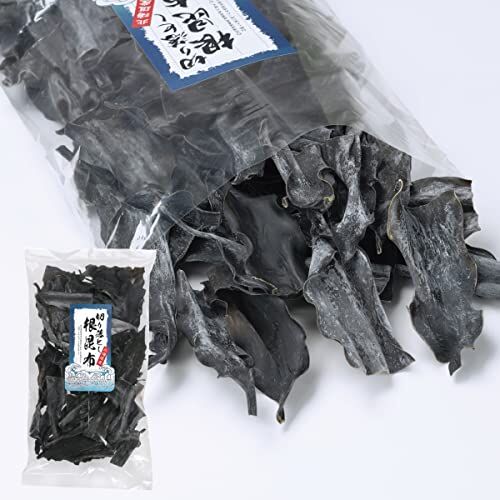DESCRIPTION
: Hidaka kelp is the mainstream of the Matsumae region as a Hokkaido kelp, but later produced on the Hidaka coastal area. Most of the domestic production of kelp is collected from Hokkaido and is equivalent to almost 95 % of the whole. Aomori Iwate Miyagi Prefecture is around 5 % in the three Tohoku prefectures in Miyagi Prefecture. Kelp has been growing in the Northern Hemisphere in the Northern Hemisphere 26 Southern Hemisphere in Japan, with 45 types of kelp in Japan. Kelp, a cold -style brown algae, is distributed on the Pacific coast north of Miyagi Prefecture and the entire Hokkaido area in Japan, especially Hokkaido. Looking at the distribution of kelp along the coast of Japan, the coast of the cold style (Hokkaido's Pacific Ocean's Family Tide) is a good kelp and the coast of the Okhotsk Sea coast of the Sea of ??Japan and the coast of the Okhotsk Sea, which is north of the Tsushima Warm Ryu. In addition, Shin kelp is growing along the coast of the Tsugaru Strait from the eruption bay between warm and cold and cold streams. "Japanese food" was registered as a UNESCO Intangible Cultural Heritage. How to eat kelp maki -kokudakokudakokudakudani stir -fried food Natural Hokkaido Hidaka kelp It is dark green and black. [Habitat] Mitsushishi -cho is the main producing area of ??Mitsui (Mitsushi), and from the east Tokachi coast to Shiranuka (Shirankan), the area from the south of the area to Shiranakuchihama (Esan) Cape Eyama (Esan) Shiokubi). The growing water depth is 10 to 15m. [Produced location name] E Hidaka region [Tomihama Kadobetsu Atsuga (Atsuga) Shizunai Shizunai Spring (Haruta) Spring (Mitsushi) Ogifushi (Ogifushi) Toei (Toei) Ikankai Urakawa Simai (Hira) Hirau (Hirau) Asahi winter Island (Chika Fue) Honporo (Honporo) Otomi Oriental Misaki Nodo (Shoya)] E Tokachi birth E Watashima (Oshima) [Eyama Furui (Kobu) Ashigashi (Shiriki)], etc.

